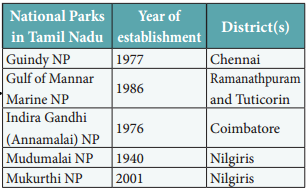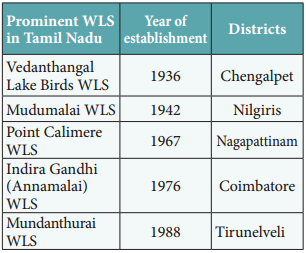Learninsta presents the core concepts of Biology with high-quality research papers and topical review articles.
Biodiversity And Its Conservation
The natural resources of the Earth, including air, water, land, flora and fauna of natural ecosystems must be safeguarded for the benefit of the present and future generations through careful planning and management, as appropriate – Principle of the Stockholm Declaration, 1972. The large-scale loss of biodiversity and its global impact makes conservation the need of the hour.
Conservation of biodiversity is protection and scientific management of biodiversity so as to maintain it at its optimum level and derive sustainable benefits for the present as well as future generations. It aims to protect species from extinction and their habitats and ecosystems from degradation.
General strategies in conservation
- Identify and protect all threatened species
- Identify and conserve in protected areas the wild relatives of all the economically important organisms.
- Identify and protect critical habitats for feeding, breeding, nursing, resting of each species
- Resting, feeding and breeding places of the organisms should be identified and protected
- Air, water and soil should be conserved on priority basis
- Wildlife Protection Act should be implemented
There are two aspects of conservation strategies (Table 11.4).
- In-situ conservation
- Ex-situ conservation
In-situ Conservation (Conservation in the natural habitat)
This is the conservation of genetic resources through their protection within a natural or manmade ecosystem in which they occur. It is conservation and protection of the whole ecosystem and its biodiversity at all levels in order to protect the threatened species.
Maximum protection of biodiversity hotspots regions with very high levels of species richness. Although all the biodiversity hotspots together cover less than 2 percent of the earth land area, the number of species they harbour is extremely high and protection of these hotspots could reduce the ongoing mass.
Protected Areas
These are biogeographical areas where biological diversity along with natural and cultural resources is protected, maintained and managed through legal measures. protected areas include national parks, wild life sanctuaries, community reserves and biosphere reserves.
World Conservation monitoring centre has recognized 37,000 protected areas world-wide. India has about 771 protected areas covering 162099 km2 comprising of National Parks (104), Wild Life Sanctuaries (544), biosphere reserves (18) and several sacred groves.
National Parks (NP)
It is a natural habitat that is notified by the state government to be constituted as a National Park due to its ecological, faunal, floral, geomorphological, or zoological association of importance. No human activity is permitted inside the national park except the activities permitted by the Chief Wildlife Warden of the state under the conditions given in CHAPTER IV, of the Wildlife Protection Act (WPA) 1972 (Table 11.2).
National Parks in Tamil Nadu

There are 104 existing national parks in India covering an area of 40, 501 km2, which is 1.23% of the geographical area of the country (National Wildlife Database, Aug. 2018). National Park is an area which is strictly reserved for the betterment of wildlife and biodiversity and where activities like development, forestry, poaching, hunting, grazing and cultivation are not permitted.
They are large areas of scenic and national beauty maintained for scientific educational and recreational use. They are not used for commercial extraction of resources. Kaziranga National park is a protected area for the one Horned Rhinoceros in Assam.
Wild Life Sanctuaries (WLS)
Any area other than the area comprised with any reserve forest or the territorial waters can be notified by the State Government to constitute as a sanctuary if such area is of adequate ecological, faunal, floral, geomorphological, natural or zoological signifiance. This is for the purpose of protecting, endangered factual species. Some restricted human activities are allowed inside the Sanctuary area details of which are given in CHAPTER IV, of the Wildlife Protection Act (WPA) 1972. Ecoturism is permitted, as long as animal life is undistrubed.
There are 544 existing wildlife sanctuaries in India covering an area of 118,918 km2, which is 3.62 % of the geographical area of the country (National Wildlife Database, 2017).
Sanctuaries are tracts of land where wild animals and fauna can take refuge without being hunted or poached. Other activities like collection of forest products, regulated harvesting of timber, private ownership of land are permitted. Periyar wild life sanctuary in Kerala is famous for the Indian Tiger and Asiatic Elephant (Table 11.3).
Wild life sanctuaries in Tamil Nadu

Biosphere Reserve (BR):
Biosphere Reserve (BR) is an international designation by UNESCO for representative parts of natural and cultural landscapes extending over large area of terrestrial or coastal / marine ecosystems or a combination thereof BRs are designated to deal with the conservation of biodiversity, economic and social development and maintenance of associated cultural values.
Biosphere Reserves are thus special environments for both people and nature and are living examples of how human beings and nature can co-exist while respecting each other’s needs. The Biosphere Reserve Programme is guided by UNESCO’s Man and Biosphere (MAB) programme, as India is a signatory to the landscape approach supported by MAB programme.
The scheme called Biosphere Reserve was implemented by the Government of India in 1986. There are 18 Biosphere Reserves in the country Agasthyamalai (Karnataka – Tamil Nadu Kerala), Nilgiri (Tamil Nadu – Kerala), Gulf of Mannar (Tamil Nadu) are the BRs notified in Tamil Nadu.
Sacred Groves
A sacred grove or sacred woods are any grove of trees that are of special religious importance to a particular culture. Sacred groves feature in various cultures throughout the world.
Ex-Situ Conservation
It is conservation of selected rare plants / animals in places outside their natural homes. It includes offite collections and gene banks.
Offsite Collections
They are live collections of wild and domesticated species in Botanical gardens, Zoological parks, Wildlife safari parks, Arborata (gardens with trees and shrubs). The organisms are well maintained for captive breeding programmes.
As a result, many animals which have become extinct in the world continue to be maintained in Zoological Parks. As the number increases in captive breeding, the individuals are selectively released in the wild. In this way the Indian crocodile and gangetic dolphin have been saved from extinction.
Gene Banks
Gene banks are a type of biorepository which preserve genetic materials. Seeds of different genetic strains of commercially important plants can be stored in long periods in seed banks, gametes of threatened species can be preserved in viable and fertile condition for long periods using cryopreservation techniques.
However, it is not economically feasible to conserve all biological wealth and all the ecosystems. The number of species required to be saved from extinction far exceeds the conservation efforts.